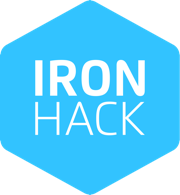In this lab, you will deploy Jenkins as a web application using a Docker image from Docker Hub. Jenkins is a widely used, open-source automation server that helps teams with Continuous Integration (CI) and Continuous Delivery (CD). We’ll go beyond the basic steps to highlight real business scenarios, best practices around persistent storage, and security considerations.
-
Automating Build Pipelines
- Jenkins is heavily used to compile and test applications automatically whenever new code is pushed.
- In a business context, this ensures quality and consistency, reducing manual build errors.
-
Continuous Delivery & Deployment
- Jenkins integrates with cloud platforms (AWS, Azure, GCP) or on-prem solutions to deploy code or Docker images to production.
- Businesses can deliver updates faster and maintain an agile workflow.
-
Integration with Multiple Tools
- Jenkins supports thousands of plugins (Git, Slack, Jira, etc.), providing visibility and collaboration across teams.
- Real-world scenarios include automatic notifications, issue tracking integration, and advanced test reporting.
-
Infrastructure as Code (IaC)
- Teams often use Jenkins to automate provisioning of servers and other resources (with Terraform, Ansible, etc.).
- This fosters a more declarative, repeatable approach to operations and infrastructure management.
- Docker Installed: Verify Docker Engine is up and running (
docker --version). - Sufficient System Resources:
- Jenkins can be memory-intensive, especially with multiple plugins and concurrent builds.
- At least 2 CPU cores and 4GB RAM are recommended for a small Jenkins installation.
- Go to Docker Hub.
- In the search bar, type
Jenkins. - Identify the official Jenkins repository, typically named
jenkins/jenkins.
Note: We’ll use the LTS (Long-Term Support) version for stability:
jenkins/jenkins:lts
docker pull jenkins/jenkins:lts- This downloads the latest LTS image for Jenkins.
docker inspect jenkins/jenkins:lts | grep ExposedPorts- By default, Jenkins uses port 8080 for its web interface and 50000 for agent communications.
Here, we map 8080 inside the container to 81 on our host, but feel free to choose any free port on your host system.
docker run -d \
-p 81:8080 \
--name my_jenkins \
jenkins/jenkins:ltsExplanation:
-d: Run in detached mode (in the background).-p 81:8080: Map host port 81 to container port 8080.--name my_jenkins: Gives our container a friendly name (my_jenkins) instead of an auto-generated one.jenkins/jenkins:lts: The image to run.
To retain Jenkins data (job configs, plugins, logs) between container restarts or upgrades, mount a volume:
docker run -d \
-p 81:8080 \
-v jenkins_home:/var/jenkins_home \
--name my_jenkins \
jenkins/jenkins:lts-v jenkins_home:/var/jenkins_homecreates or uses a named volume for Jenkins’ home directory.
Why This Matters: Without a volume, if you remove or recreate the container, all Jenkins settings and build history are lost.
Open your browser and navigate to:
http://localhost:81
- You should see the Jenkins setup/activation page.
The Jenkins activation page prompts you to unlock Jenkins with an initial admin password:
-
Locate the Initial Admin Password:
docker exec -it my_jenkins cat /var/jenkins_home/secrets/initialAdminPassword- This returns a long alphanumeric string.
-
Paste the Password into the activation page at
http://localhost:81. -
Complete Setup:
- Install recommended plugins, or select custom plugins based on your needs.
- Create your admin user for Jenkins.
Hint: If you need to run multiple commands inside the Jenkins container, open a shell:
docker exec -it my_jenkins /bin/bash-
Run Jenkins as a Non-Root User (Advanced)
- The official Jenkins image uses the user
jenkinsinternally. Verify you’re not running the process asroot. - For production, consider further hardening the container with user IDs, SELinux/AppArmor profiles, etc.
- The official Jenkins image uses the user
-
Enable HTTPS
- For public-facing Jenkins, set up TLS/SSL using a reverse proxy like Nginx or Traefik in front of Jenkins.
- This helps protect sensitive credentials and pipeline secrets.
-
Credential Management
- Store secrets (like Git SSH keys, AWS credentials) using Jenkins’ Credentials store.
- Do not bake credentials into images or environment variables.
-
Backup Strategy
- Regularly back up the mounted volume or
/var/jenkins_hometo avoid data loss in case of a container or host failure.
- Regularly back up the mounted volume or
-
Resource Allocation
- Monitor Jenkins resource usage. If you run multiple build agents, you might need to allocate more CPU/memory (
--cpus,--memoryflags) or scale with Docker swarm or Kubernetes.
- Monitor Jenkins resource usage. If you run multiple build agents, you might need to allocate more CPU/memory (
-
Check the Container Status:
docker ps
- Look for
my_jenkinswith the PORTS column showing0.0.0.0:81->8080.
- Look for
-
Login to Jenkins:
- Confirm you can create a new job, configure it, and run a test build.
-
Check Container Logs:
docker logs my_jenkins
- You should see Jenkins startup logs and any build logs if you’ve run a job.
- Stop the Container:
docker stop my_jenkins
- Remove the Container (optional):
docker rm my_jenkins
- Remove the Volume (optional):
docker volume rm jenkins_home
- Do this only if you’re sure you no longer need Jenkins data.
To submit this assignment:
- Take screenshots of:
- Your Docker commands in the terminal
- The Jenkins activation screen or Jenkins dashboard
- Paste them into a document (Google Docs or PDF).
- Upload the document to Google Drive (or your LMS) and share the link.
- Ensure your instructor has access to view the document.
- You have successfully pulled the official Jenkins LTS image and run it in a Docker container.
- You mapped host port 81 to container port 8080 and unlocked Jenkins using the initial admin password.
- For real-world deployments, follow the best practices around persistent storage, security, and resource allocation.
- Next, consider exploring how to install plugins, configure pipelines, or automate container builds with Jenkins.
By completing this lab, you’ve laid the foundation for setting up your CI/CD pipelines in a containerized environment. Well done!
Confetti time for your successful Jenkins deployment via Docker! 🎉
